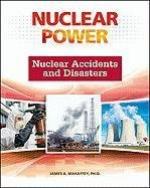|
This section contains 1,660 words (approx. 6 pages at 300 words per page) |

|
From the outside, power plants that use nuclear fuel look quite distinct from power plants fueled by coal or powerful rivers. These facilities actually function, however, in much the same way. Basically, they all heat water, converting it to steam. The result- ing pressure turns the rotors in one or more turbines. The spinning turbine shaft powers a generator capable of producing electricity. Electrical current can then be sent, via high-voltage wires, to cities and towns.
Nuclear plants also feature elaborate cooling systems, since the nuclear fuel generates extensive heat that must be dissipated. Nuclear plants located on rivers or the sea use water as a coolant.
Perilous Research
Research reactors are much smaller than nuclear power plants and have less uranium or other fuel in the core. Thus, when accidents such as leaks and spills happen at research reactors, they do...
|
This section contains 1,660 words (approx. 6 pages at 300 words per page) |

|




